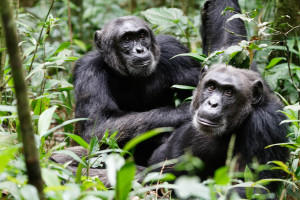Can we model how viruses move between species?
Posted on March 24, 2016 by Nancy Mendoza
Dr Ben Longdon from the University of Cambridge is presenting his work on emerging viruses at the Microbiology Society Annual Conference today (24 March). He may have found the key to predicting which viruses will emerge to cause severe illness in humans, after jumping the species barrier.

Emerging infectious diseases are among the greatest threats to humanity. Over the past few years we’ve already seen an extensive and devastating outbreak of Ebola virus in West Africa, and two coronaviruses that cause respiratory disease: SARS and MERS.
What all of the above viruses have in common is that they first emerged in a non-human species – bats in the case of Ebola and camels for MERS, for example – before ‘jumping’ the species barrier to humans. Dr Ben Longdon from the University of Cambridge is researching why viruses can cause benign infections in some species, and cause high levels of mortality in others.
He said: “The Ebola virus appears to cause few symptoms in bats but when it jumps into humans or other primates, it is far more virulent and can kill the host quickly. We wanted to know if it might be possible to predict how harmful a virus might be once it jumps species.”
With the ‘One Health’ agenda – the idea that the interplay between human and animal health should be the starting point for research into disease – there is increasingly a desire to study emerging diseases in the context of whole ecosystems. This idea has encouraged some excellent fundamental research on what happens when viruses shift host species.
Dr Longdon researches virulence – how effective the virus is at invading the tissues of the host to cause disease and, in some cases, death; he wants to know how this changes following a host jump.
So, why is Ebola no big deal if you’re a bat and life-threatening if you’re a human or a non-human primate? Dr Longdon said: “Different groups of hosts might have gained some kind of immune or cellular difference during their evolutionary history.”
This might explain why Ebola can be much more successful in causing disease in humans and chimpanzees, which are closely related, but causes few symptoms in bats.
You can’t examine these questions in humans or primates easily, or ethically, so Dr Longdon is using fruit flies instead. In his lab, he rears generation upon generation of 48 different species of fruit fly – that’s no mean feat, requiring some super fly skills. These 48 species are all descended from a common ancestor from about 40 million years ago and, although related, they are as genetically diverse as all the species of mammals on the Earth. This makes them a good proxy for other phyla, including mammals.
He infected 48 species of fruit fly with an RNA-based virus called Drosophila C virus, which is specific to fruit flies and behaves in a similar way to other RNA viruses, like Ebola. Dr Longdon and his colleagues use a simple measure of virulence – how long does it take for the virus to kill its host?
The following animation shows how the virus affects each species over a period of days following infection – red for high rates of death, green for low.
Dr Longdon said: “These differences may be due to some groups of fruit fly species having either lost or gained immune or cellular components that affects susceptibility to the virus.”
This successful experiment proves that if we know the virulence in one host, we can predict that it will be likely to be similar in closely-related species. This knowledge could mean that when we see a virus that is really dangerous to non-human primates – like Ebola – then that’s a virus we definitely should be worried about for its potential impact in humans.
Dr Longdon said: “While there may be no clear rule to predict how deadly a pathogen will be in a new host, a simple rule of thumb may be that if it causes high levels of virulence in any given host species, it will typically cause similar levels of virulence in closely-related hosts. If we see a new disease emerge that causes high levels of mortality in chimpanzees, for example, then it may also be a danger to humans.”
The next stage of this research will be to begin to identify the immune and cellular components that cause differences or similarities in the virulence of viruses in different species.
Nancy is a freelance science writer (www.nancywmendoza.co.uk).
